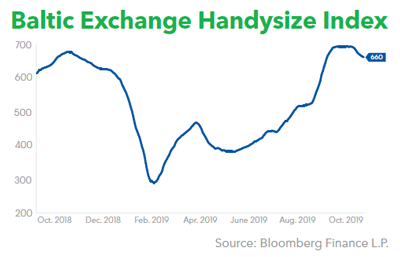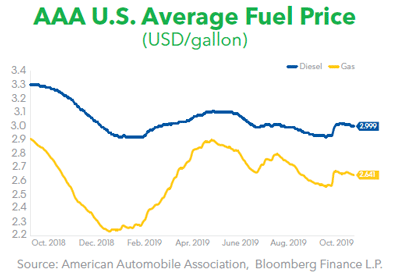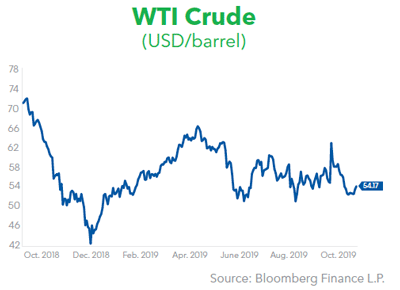 U.S. Gulf:
U.S. Gulf:
Movements above New Orleans continued to see restrictions due to areas of shoaling. Maximum tow lengths were reduced by five barges from the typical 40-barge limits, with further reductions noted around low-water zones. Ensuing delays were expected to reach 1-2 days in each direction.
Navigation and towing continued to be limited in the Houston Ship Channel after several loose barges struck the San Jacinto River’s I-10 bridge on Sept. 20 (GM Sept. 27, p. 22), sources reported. Vessels were capped at a single barge per tow, while navigation was limited to daylight hours only. The restrictions were projected to remain in place while bridge repairs are underway.
Sources described a return to normal navigation at the Port Arthur Bridge, located at Mile 289 in the West Canal. Swift currents were previously blamed for 6-12 hour delays in the area.
Replacement guidewall construction underway at Bayou Boeuf Lock limited transit to overnight hours only. The project is scheduled to run through Oct. 31, ahead of the previous Nov. 10 estimate.
Sporadic shutdowns at Leland Bowman Lock reported since Sept. 3 were slated to conclude on Oct. 14. Lock repairs have necessitated daily shutdowns between 6:30 a.m. and 6:00 p.m. Bayou Sorrel Lock is scheduled to remain offline through Oct. 19 due to repairs underway on the site’s southern gate. The project has completely closed the lock to navigation.
Sources predicted a return to normal operating hours at Brazos Lock on Oct. 15 after weeks of reported daytime navigation outages. Intermittent delays were reported up to 13.5 hours for the week. Industrial Lock waits were quoted in a 5-10 hour range on Oct. 9, while boats transiting Algiers Lock noted 4-8 hour wait times. Sporadic Colorado Lock delays were heard topping out at 17 hours.
 Mississippi River:
Mississippi River:
Reduced tow sizes continued on southbound travel through the upper Mississippi River.
The Corps slashed tows to nine barges from St. Paul to Prairie du Chien, Wisc., located at Mile 791, while tow lengths were raised to 12 barges from Prairie du Chien to St. Louis. Improvement in the upper river’s shoaling situation was counteracted by rising water levels, sources said, resulting in an indefinite extension of the restrictions.
High water in St. Louis prompted daylight-only travel restrictions through the St. Louis harbor. Overnight travel will remain off limits until the St. Louis gauge falls below the 25-foot mark. The National Weather Service (NWS) noted area levels at a minor-flood 30.93 feet on Oct. 9. Forecasts called for the gauge to hit 25 feet on Oct. 22, later than the service’s previous Oct 19-21 estimate.
Northbound tow sizes were limited between Cairo, Ill., and St. Louis due to fast currents at Thebes, Ill., located at Mile 50 on the upper river. Vessels continued to be permitted for 15 loaded barges on a tow, but empty barges were reduced to three barges from the usual nine allowed.
Unusual vessel congestion continued as a factor in the upper river, shippers said. The heavier-than-usual traffic was blamed for lengthy lock delays and slowed transit speeds.
On the lower river, shippers continued to note numerous areas of shoaling and low water. Dredges arrived at Victoria Bend, located at Mile 595, on Oct. 7, resulting in a complete transit shutdown lasting approximately 24 hours. Northbound transit resumed at midday on Oct. 8, while southbound tows were scheduled to resume navigation on Oct. 9 Dredging will continue at the site through Oct. 17.
Additional shoaling delays were reported at Miles 676, 758, 807, 816, and 870, limiting tows to 30 or fewer barges through each trouble spot. General low-water conditions limited maximum two lengths to 35 barges on the lower river, down from the usual 40-barge tows. Shippers expected the limits to add 1-2 days of travel time in both directions.
 Illinois River:
Illinois River:
Heavy rainfall was said to result in quickly rising waters on the Illinois River in recent weeks. The swollen waters prolonged shutdowns previously underway at Marseilles Lock, Starved Rock Lock, and Lockport Lock, all of which were originally scheduled to return to service on Oct. 5.
In an effort to speed completion, the Corps was said to reroute additional resources to the projects, prompting revised estimates for both Marseilles and Starved Rock to return to service on Oct. 11-13. Lockport Lock reopened on Oct. 6, sources said.
A fish barrier at Mile 296 will block navigation from 7:00 a.m. to 11:00 a.m. and 1:00 p.m. to 5:00 p.m. on Nov. 18-22, sources said.
Lock shutdowns scheduled to begin in third-quarter 2020 will completely halt Illinois River navigation. Marseilles Lock, Starved Rock Lock, and LaGrange Lock are all due to close on July 1 for up to 120 days. All three sites are tentatively slate to reopen on Oct. 31.
In addition, Dresden Island Lock and Brandon Road Lock will each undergo approximately 90 days of restricted navigation access. Dresden Island and Brandon Road will also be subject to one 14-day complete shutdown each between July 1 and Oct. 31, 2020.
 Ohio River:
Ohio River:
The Ohio River’s Willow Island Lock was experiencing a primary chamber shutdown slated to continue through Nov. 1. Tows were routed through the lock’s smaller secondary chamber, with delays reported in a 7-12 hour range.
Repairs underway at both Smithland Lock chambers have prompted the Corps to alternate navigation between the two chambers, sources said, creating the potential for intermittent delays. Work is scheduled to continue at the site through Nov. 15.
On the Tennessee River, drawbridge repairs at Mile 304 will block river navigation 7:00 a.m. to 5:00 p.m. on Oct. 21-31. Kentucky Lock delays were generally noted under 10 hours for the week, although a handful of tows were heard to require up to 19 hours to pass the site.
Arkansas River:
The upper Arkansas River remains officially open for navigation, allowing barges to reach the Catoosa, Okla., area after the previous extended closure. Tows nevertheless continue to be limited to six barges while efforts to re-buoy the entire river are underway, currently predicted to continue into early November. Arkansas River barge counts are limited to 12 barges during normal operating conditions.
Sources are predicting 1-2 months will be required to clear the backlog of barges awaiting pickup at both ends of the river.